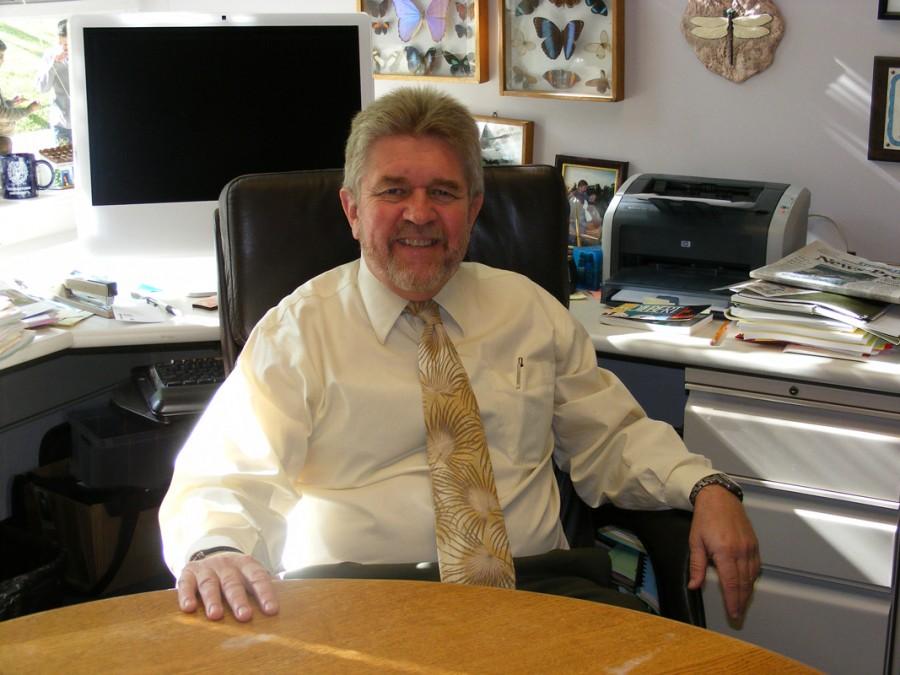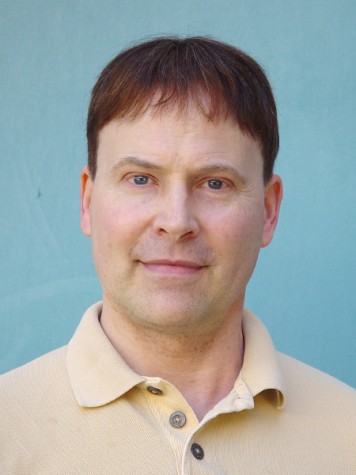Biologist-administrator Ronald K. Harlan, in his 33 years of committed service, accomplished many objectives, including a nationally recognized program for biology majors, and the spearheading of a marine biology program upgrade for the Baja field station.
Harlan, 61, taught biology from 1979 to 2006 including 17 summers in Baja. He retired from his most recent post as dean of instruction on Sept. 30.
“He really served the college well in his 33 years,” said biology division chair Lynn Mizuno.
In retirement, he and his fiancée Michele Pallazzo plan to buy acreage in Fallbrook, grow organic vegetables, make wine, and perhaps write a book together.
And then there is the traveling. Harlan, who spent his childhood in Burma, made eight trips to the Amazon “just for fun.” Now, he and Pallazzo can travel more.
Over his long career, Harlan mentored many biology students.
“He doesn’t try to sugar-coat things; he tells it like it is,” said former student, Lauri Green, 31.
Thanks to Harlan’s biology majors program, Green earned her doctorate from UCLA and is now working as a field ecologist. Her research may one day help secure funding to clean up the California coastline.
“Educators like Dr. Harlan thoroughly lay down the fundamentals on cell function and how evolution works,” said Green. “Everything he taught came up in my classes later on. He gave me so much support and guidance.”
Harlan made every effort to secure a better future for his students. When UCLA and other four-year colleges refused to recognize biology coursework done at Glendale, he solved a problem that they could not.
In 1999, Harlan led a symposium of biology professors from UCLA and 22 community colleges. One result was that Harlan added Biology 103 to the curriculum. This ensured that GCC graduates’ coursework would transfer longitudinally.
The biology majors’ eight course core was accepted at UCLA, the most rigorous of all universities.
Harlan, who holds a doctorate in higher education from UCLA, said he thrives on knowing he has helped his students to understand biology and make wise decisions.
A display of 100 of his alumni is planned for the “wall of fame” in the San Gabriel Building.
“I chose him because I could see a spark in Ron that made me sense his love for science,” said colleague and friend, Kindra Girard. She was on Harlan’s original hiring committee and had to decide between two equally qualified candidates. “Ron was the right man for the job,” she said.
To qualify, Harlan was a community college graduate, earned his bachelor’s degree in biology from Cal State Hayward and worked two years for the Centers for Disease Control.
With a master’s degree from UC Santa Barbara in aquatic and population biology, he also got a lifetime California community college teaching credential in biological sciences, zoological sciences, and marine sciences.
He said he would like to be remembered as a well-liked professor — hard, but fair — and also for his perseverance and ingenuity in bringing worthwhile projects to completion.
His accomplishments serve as an example to all faculty and administrators. He was honored with the Parker award in 2003.
The Dr. William L. Parker Exceptional Service Award goes annually to a faculty member for good college “citizenship” and contributions to college life outside the classroom, such as participation and leadership in committees and outreach.
He was extremely active on campus committees and in governance. For example, he served two terms as the president of the faculty Guild where he helped in raising sabbatical compensation from 50 percent to 75 percent.
Recently, he submitted a financial report to defend the Baja program in the face of budget cuts. Notably, Baja’s $172,000 in fundraising helped to cement the field station’s future.
But Harlan could not defend the “oak grove and meadow” from Granite Construction. The GCC property habitat was lost to the upper parking structure and fire road construction.
The company began the project while Harlan was on sabbatical at UCLA in 1990-91.
Claiming the area to be nothing but brush, Granite disregarded the well-marked pathway for the road and bulldozed a pristine ecosystem including 12 mature oak trees.
They had no permit to remove the oaks.
Harlan led a lawsuit against Granite, which brought about a $100,000 settlement. “That magic place is gone,” he said. “But the money was used for habitat reconstruction work.”
At his going away party on Thursday, the 40-acre nature preserve above the fire road was officially named the Dr. Ron K. Harlan Oak and Riparian Woodlands.
Five years ago, Harlan was prompted to apply for dean of instruction after teaching biology for 28 years, 10 years of which he served as biology department chair.
In the 12-months-a-year administrative position, he presided over eight of the school’s academic divisions including science, math and English.
Harlan said he plans to continue to give talks like the seven different science lectures he gave during his career. His lecture on Sept. 27, was titled, “A Biologist Reflects on our Life and Times.”
Compared to our animal nature, our social nature compels us to listen to the voices of reason, community and morality. “At least in academia, we appreciate that what we can do in a group has more [clout] than what we can do as an individual,” he said.
For example, without the help of the college’s resources, Harlan would not have been able to develop the biology majors program, steer the Baja program through its difficulties, or provide students with major lecturers such as top orangutan expert, Biruté Galdikas.
“I’ve tried to lead by example. By rolling up my sleeves, I identify problems and find out how to be involved in the solution.”
Problem-solving was what inspired Harlan throughout his career as dean and biologist.
“Studying tide-pool species, observing bioluminescents, and snorkeling with whale-sharks can be a life-changing experience for many students,” said Mizuno.
The Ron Harlan influence will not soon be forgotten.


